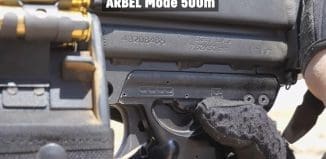Lessons from the Iron Dome
This post is also available in:  עברית (Hebrew)
עברית (Hebrew)

![]() By Yiftah S. Shapir
By Yiftah S. Shapir
INSS – Military and Strategic Affairs Program
Israel has been under rocket attack for many years. Particularly memorable are the shelling of Galilee panhandle towns in the 1970s, the Second Lebanon War in 2006, when Israel suffered over 4,000 rocket attacks in one month, and the ongoing rocket fire from the Gaza Strip over the past decade. Over the years, the State of Israel has developed a doctrine for defense against high trajectory weapons, of which rocket fire is one type.
This doctrine is based on layers of defense, from passive defense, to active defense – involving interception of rockets and missiles by the Iron Dome system, David’s Sling (in development), the Arrow 2, and the Arrow 3 (in development), to offense against launchers on their bases.
This article focuses on the Iron Dome system, which entered into operational service in early 2011 and demonstrated what it was capable of within a few months of its deployment. The article attempts to examine the lessons from the system’s deployment and to reassess the decision about purchasing the system. It will also examine future ramifications of deploying this system and other systems that are expected to enter into service in the near future.
Conclusion
Israel is the first country in the world to deploy an operational anti-rocket system to protect the civilian population. Very few countries in the world have suffered such severe attacks on their civilian populations for such an extended period. It is therefore no wonder that Israel has invested such extensive resources in the search for solutions to the problem.
The solution chosen was not without controversy. Opponents of the project pointed to several of the system’s flaws: some are inherent in any system and others are unique to Iron Dome, which, like any technical system, suffers from one type of technical defect or another. Other opponents also pointed to the high cost of the system, arguing that there were better technological solutions.
The above analysis shows that decision making is a complex process that takes into account various types of considerations, the operational consideration being only one of them. Social, political, and even international considerations are no less and perhaps even more important. Given this range of considerations, the decision to purchase anti-rocket defense systems appears to be a wise one.
Apparently the diplomatic and political considerations, which were indifferent to the technical differences among the various systems, were the decisive factors in decision making. Therefore, any debate on the question of the technical alternatives – Iron Dome or any other possible system – is pointless.
The more difficult decision must be the decision to limit the amount of money invested in defensive capability in order not to harm the IDF’s offensive capability. This decision requires a thorough discussion of the relationship between defense and offense in general. The Iron Dome system is only the tip of the iceberg of this comprehensive discussion, which is well beyond the scope of this article.
 Yiftah S. Shapir is a senior research fellow and director of the Military Balance Project at INSS.
Yiftah S. Shapir is a senior research fellow and director of the Military Balance Project at INSS.
This article was first published in Military & Strategic Affairs journal. Volume 5 issue 1.
To read the full article, press the following link:





























